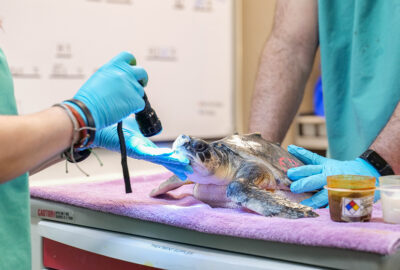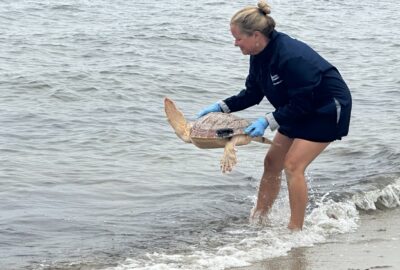How to Track a Sea Turtle
Learn about some of the tags we use to collect data on sea turtles’ movements, survivorship, and more.
By New England Aquarium on Wednesday, December 27, 2023

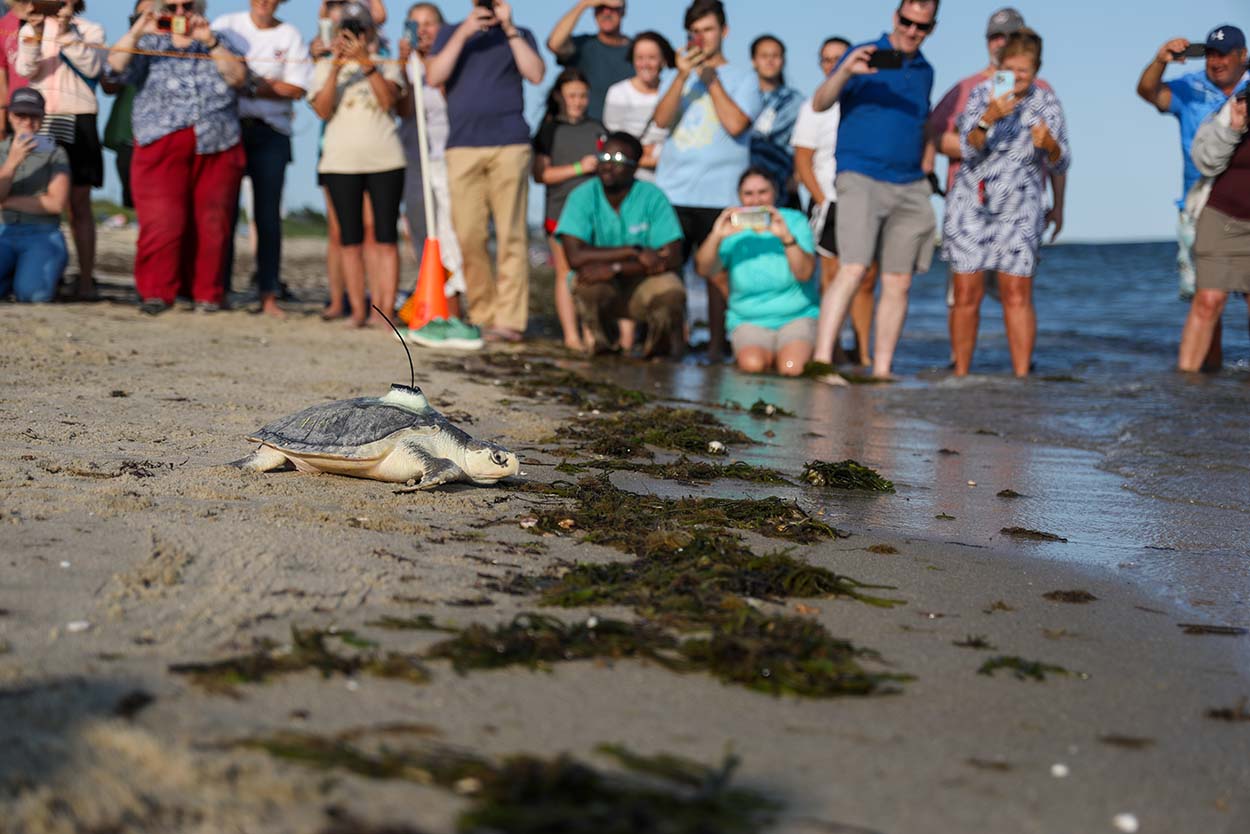
Here at the New England Aquarium, we rescue and rehabilitate hundreds of cold-stunned and injured sea turtles each year, and our Anderson Cabot Center for Ocean Life scientists work to research and help conserve sea turtles in the wild.
Right now, we use tags to study Kemp’s ridley, green, loggerhead, and leatherback sea turtles—four out of the seven species of sea turtles worldwide, and all of which are endangered or threatened. Read on to learn about the types of tags we use, how they work, and how what we learn can protect these animals.
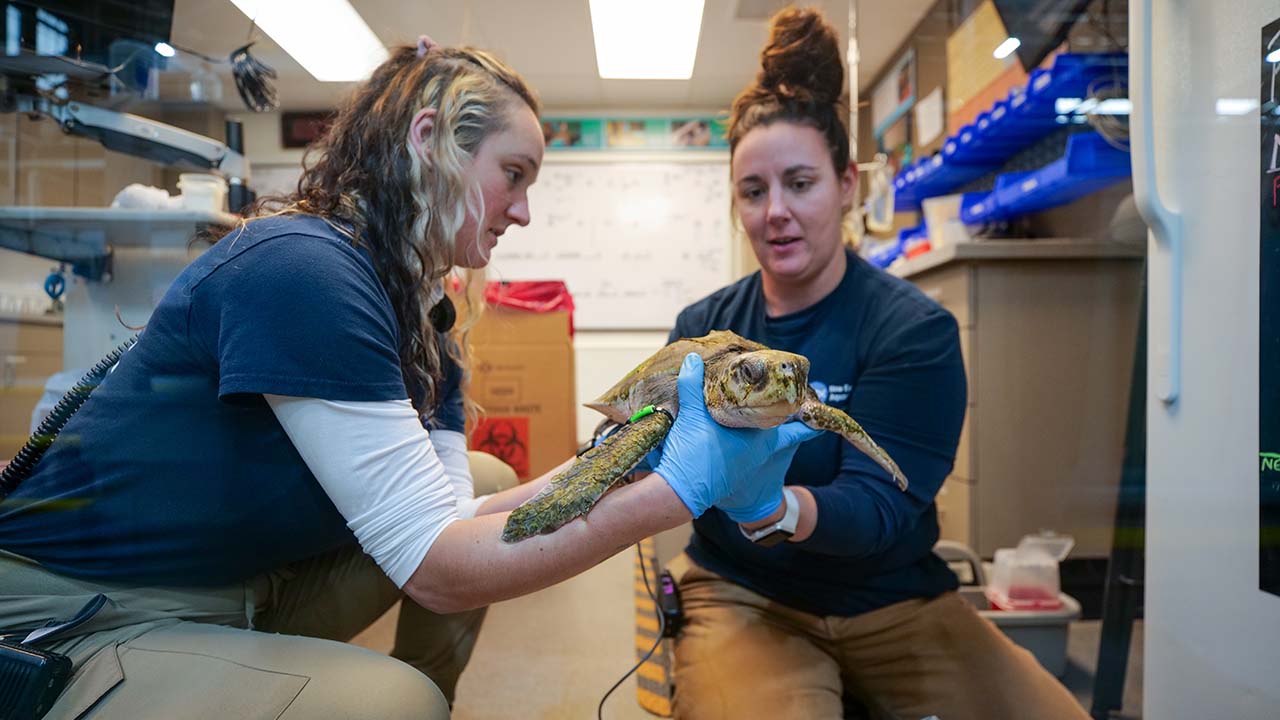
PIT tags
“Every turtle we release receives a PIT tag,” said Alessia Brugnara, a biologist at the Sea Turtle Hospital in Quincy. PIT tags, which stand for “passive integrated transponder,” are about the size of a grain of rice and are inserted beneath the skin of the turtle’s front flipper. Each tag contains an identification number for the turtle that can be scanned and can help determine if the turtle has been studied or in human care at an earlier time. PIT tags are long-lasting—in most cases, for the duration of a turtle’s life.
Inconel tags
Inconel tags, or flipper tags, are metal tags printed with a unique identification code of letters and numbers that are attached to a turtle’s flipper. Here at the Aquarium, we attach Inconel tags to the rear flipper of turtles whose carapace—or back part of the shell—measures 30 cm or more. “The Inconel tags are helpful because you don’t need any special equipment to read them, so if a turtle with an Inconel tag were to interact with a human, it would be easy to record,” Alessia said. The downside of Inconel tags is that they are more temporary and can fall off. Scarring that’s left behind can be a sign that a turtle has had an Inconel tag at one point in time.
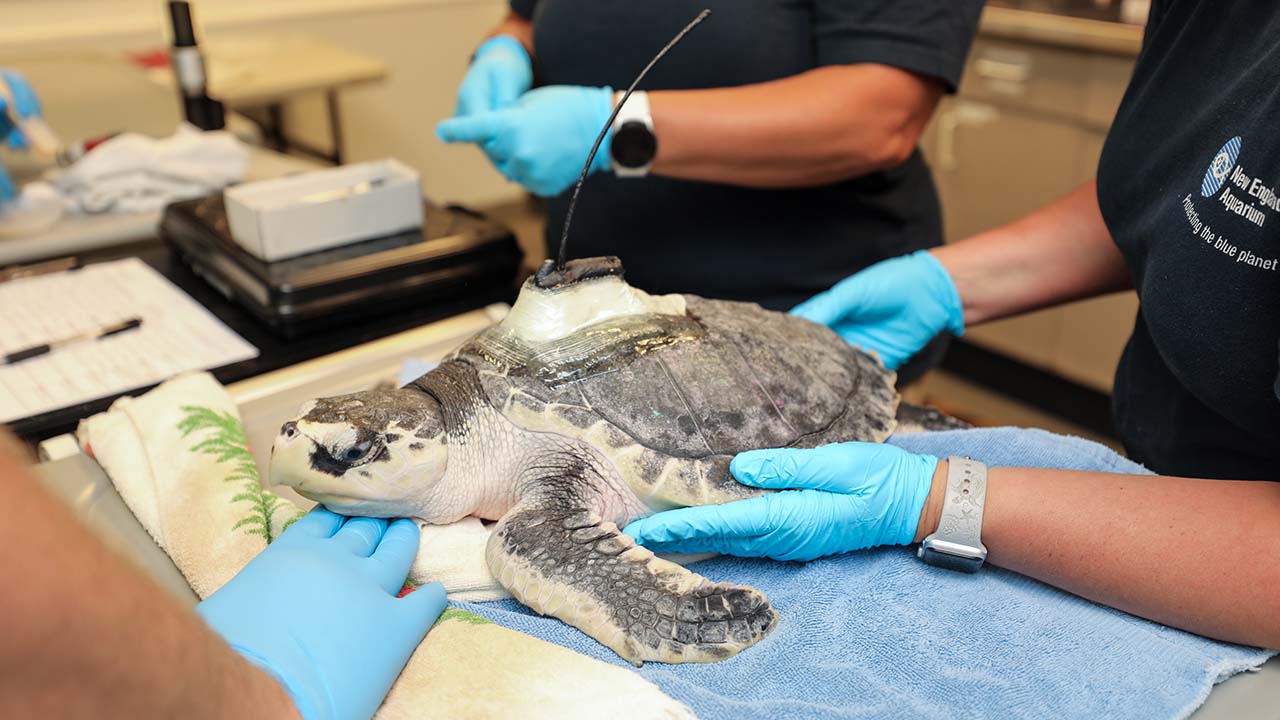
Satellite tags
As rehabilitated turtles are released back to the ocean in the summer, the team at the Sea Turtle Hospital and our Anderson Cabot Center for Ocean Life scientists often equip a few sea turtles with satellite tags. The satellite tags, which are attached to the top of the turtle’s shell, provide information on where the turtles travel and how they use their ocean habitat. “The data can also tell us about the turtles’ survivorship after release,” Alessia said.
In addition, our Anderson Cabot Center scientists use satellite tags to understand leatherback turtle nesting behavior and migrations, tagging disentangled leatherback turtles off the New England Coast and collaborating with researchers in locations such as Puerto Rico and Panama.
Over on our live sea turtle tracker, an interactive map shows turtles tagged at our Animal Care Center and leatherback turtles tagged on nesting beaches in Puerto Rico, a project done in collaboration with Marine Conservation Action Fund project leader Luis Crespo. The information gathered from these tags helps researchers better understand the turtles’ behavior and habitat use and can inform protections for sea turtles to help conserve them in the wild.
As for how long a tag will transmit data, Alessia said, “We’ve had a satellite tag track for over a year, but in reality, it can vary and really depends on a lot of different things.” In most cases, the turtles shed the satellite tag within a year, though tags may stop transmitting sooner for a few reasons, including biofouling or battery depletion.
Acoustic transmitters
In 2021 and 2022, Anderson Cabot Center for Ocean Life researchers Dr. Kara Dodge and Dr. Charles Innis pioneered a method of surgically implanting acoustic transmitters in rehabilitated loggerhead turtles, and recently published a paper on their initial results. The goal of implanting these long-lasting tags is to track the survivorship of rehabilitated sea turtles over a number of years. Initially, fourteen loggerhead turtles were given an acoustic tag, and 11 out of the 14 had been detected as of last year. To transmit data, the turtles have to swim near acoustic receivers in the ocean for their tags to be heard—the tags emit a unique “ping” that’s picked up by these listening receivers, like an “ocean EZ-Pass.”
“We learn a great deal from satellite tagging, but we wanted to have another tool in our toolbox that could provide long-term monitoring data at a lower cost than satellite tags,” said Dr. Dodge in an earlier story about the work. “Implanted acoustic tags can last for years and have been successfully used in long-term studies of fish and sharks—some projects have collected data on individual animals for 10 years! We are hoping for similar success with sea turtles.”

